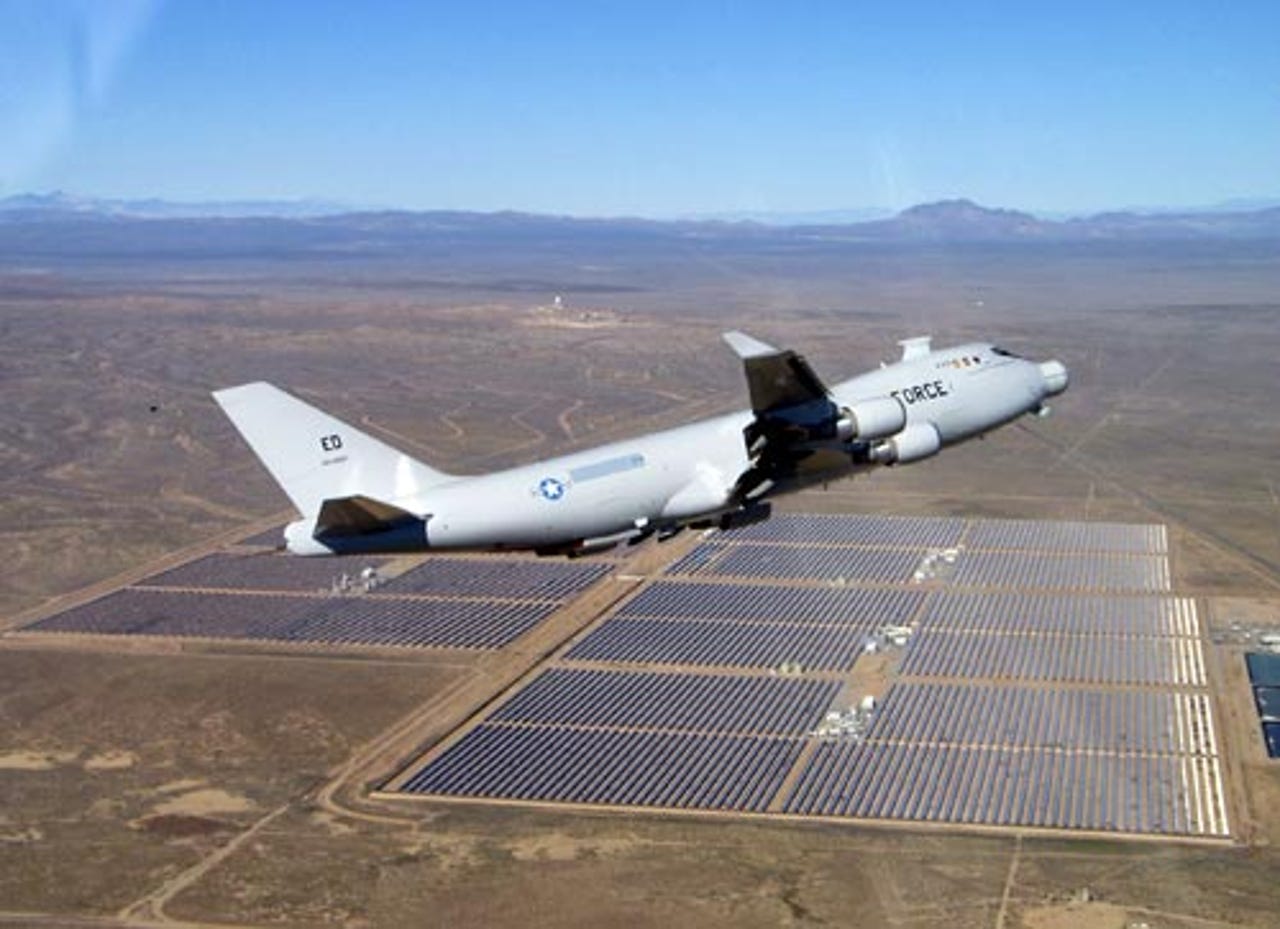Photos: Laser weapons take to the air


Photos: Laser weapons take to the air
Military researchers are studying ways to mount laser weapons on aircraft, primarily to destroy ballistic missiles. Here, a modified Boeing 747-400 freighter undergoes flight testing. The aircraft is designed to carry a megawatt-class laser.
Photos: Laser weapons take to the air
One of six modules that would go into a high-power chemical oxygen-iodine laser as part of the airborne system. Liquid lasers can fire a continuous beam but need large cooling systems, while solid-state beams must be fired in energy-gulping pulses to prevent overheating, according to New Scientist magazine.
Photos: Laser weapons take to the air
A technician studies the interaction of multiple lasers that will be used in the Airborne Laser, also known as the YAL-1A Attack Laser.
Photos: Laser weapons take to the air
Simulation of a high-energy laser being fired from a C-130 aircraft. As part of its High Energy Liquid Laser Area Defense System (HELLADS) project, the Pentagon is also looking into laser weapons that could be used in tactical combat.
Photos: Laser weapons take to the air
In this artist's rendering, a laser fires from a satellite toward a target lifting off from Earth.
Photos: Laser weapons take to the air
An artist's rendering of a space-based relay mirror, which would redirect laser energy from one location to another.
Photos: Laser weapons take to the air
Researchers expect that airborne lasers will eventually be small enough to be mounted on smaller fighter jets. The Pentagon expects to have a 15-kilowatt prototype ready by the end of 2005, and a 150-kilowatt version ready by 2007, according to the New Scientist report.
Photos: Laser weapons take to the air
Not all of the military's use of lasers would be in weaponry. At the Starfire Optical Range on Kirtland Air Force Base in New Mexico, a sodium laser combines with deformable optics to help clear up atmospheric distortions in gathering images of objects in space.
Photos: Laser weapons take to the air
Three green lasers being fired from the Starfire Optical Range.